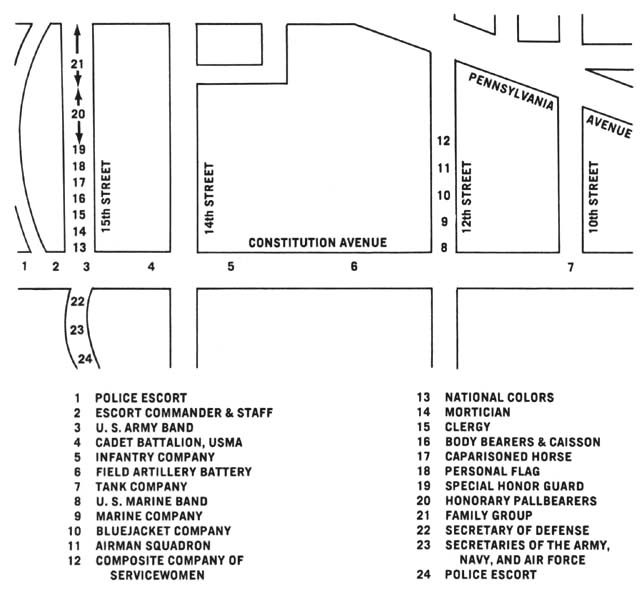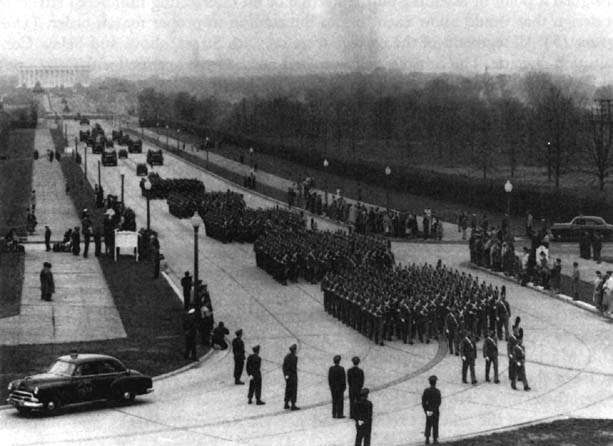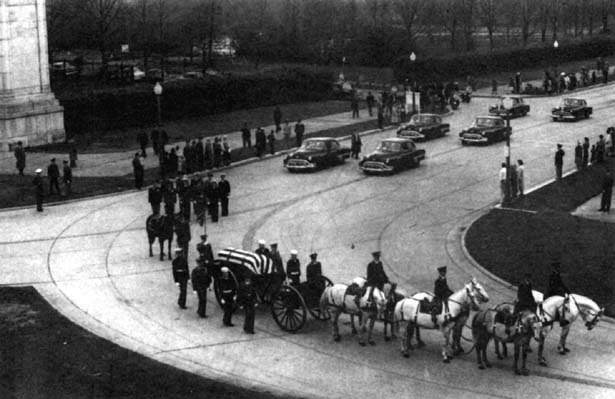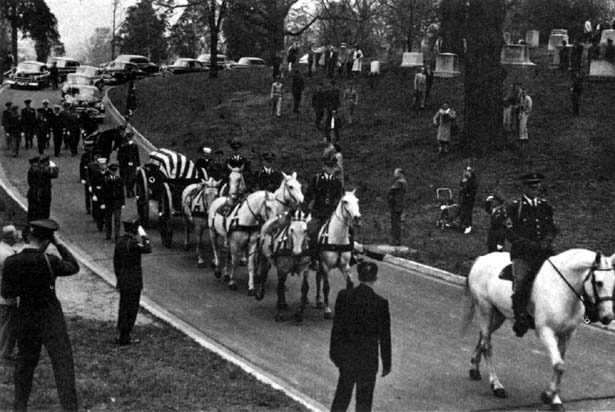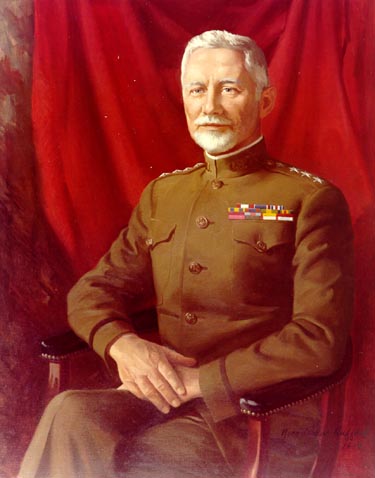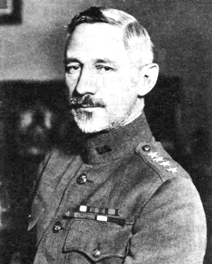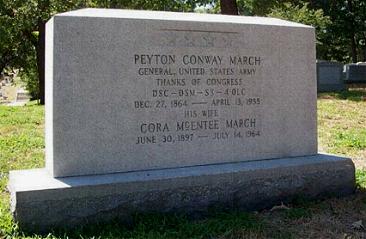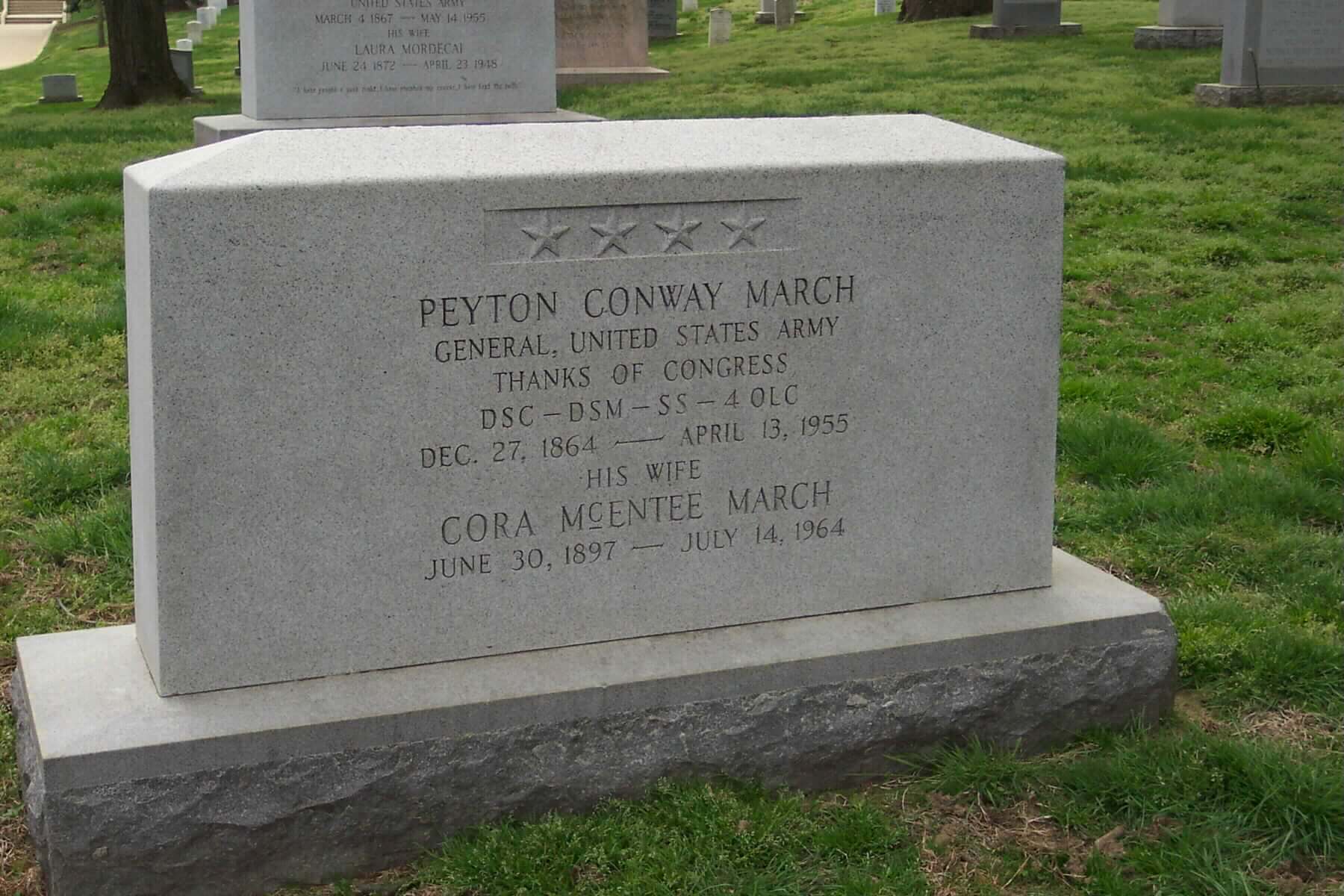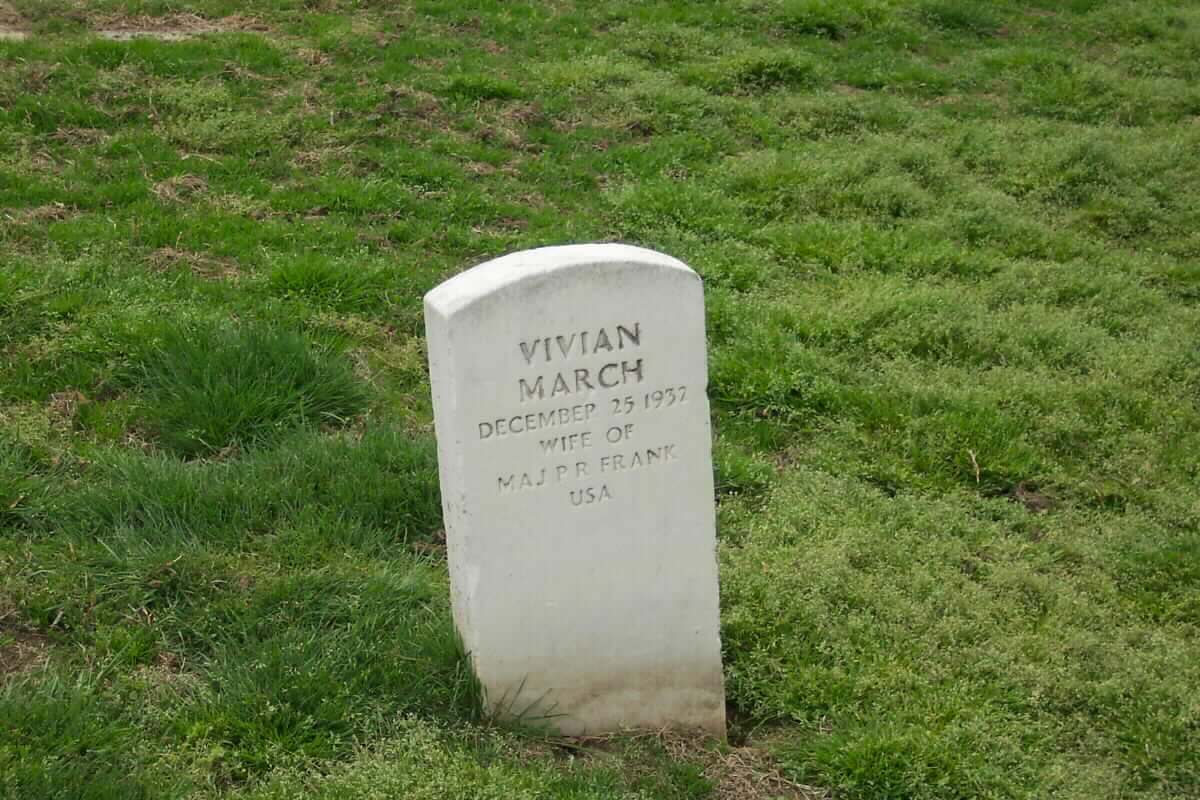Courtesy of the United States Army:
Peyton Conway March was born in Easton, Pennsylvania, on 27 December 1864. He attended Lafayette College, 1880–1884, and graduated from the United States Military Academy in 1888. He was commissioned an additional Second Lieutenant and assigned to the 3d United States Artillery, June 1888, advancing to Second Lieutenant in November.
He performed routine garrison duties in Washington, D.C., and California, 1888–1896 and married Josephine Smith Cunningham, 1891 (deceased 1904). He was promoted to First Lieutenant and assigned to the 5th United States Artillery, 1894. He attended the Artillery School at Fort Monroe, 1896–1898 and then organized and was designated Captain of the Astor Battery, 1898. He commanded it in the Philippines campaign and in the capture of Manila, 1898–1899. He was aide to General Arthur MacArthur, 1899, was promoted to Major, 33d Volunteer Infantry, July 1899, and participated in numerous operations of the Philippine Insurrection.
He was promoted to temporary Lieutenant Colonel, 1900 and was a provincial governor and commissary of prisoners, 1900–1901. He was reverted to regular Captaincy in artillery, 1901, and commanded the 19th Battery, Field Artillery, at Fort Riley, Kansas, to 1903. He was a member of the new War Department General Staff, 1903–1907, and a military observer to the Japanese Army during the Russo-Japanese War, 1904.
He was promoted to Major, January 1907, and served on the Artillery Board; commanded the 1st Battalion, 6th Field Artillery, 1907–1911; was detailed to the Adjutant General’s Department and served successively as adjutant of Fort Riley, the Department of the Missouri, the Central Department, the 2d Division, and at department headquarters in Washington, D.C., 1911–1916.
H was promoted to Colonel, July 1916, and commanded the 8th Field Artillery on the Mexican border, 1916–1917; was promoted to brigadier general, June 1917, and placed in command of the 1st Field Artillery Brigade, 1st Division, American Expeditionary Forces. He was promoted to Major General in the National Army, August 1917, and commanded the first Army and nondivisional artillery, American Expeditionary Forces, June 1917. He was promoted to Major General in the regular establishment, September 1917 and was again assigned to the General Staff and was acting Chief of Staff, March–May 1918.
He was promoted to temporary General, May 1918 and was Chief of Staff of the United States Army, 19 May 1918–30 June 1921. He established the primacy of the Chief of Staff in the Army hierarchy; presided over the buildup of American forces in World War I; centralized control over supply; created an Air Service, Tank Corps, and Chemical Warfare Service; and supervised the demobilization at war’s end.
He retired as a Major General, November 1921, and was advanced to General on the retired list, June 1930. He had married Cora V. McEntee in 1923.
He died in Washington, D.C. on 13 April 1955, and was buried with full military honors in Arlington National Cemetery (Section 30, Grave 1). His wife, Cora McEntee March (June 30, 1897-July 14, 1964) is buried with him.
His son, Peyton Conway March, Jr., Second Lieutenant, United States Army, is also buried in Section 30 (grave 1476)
March, Peyton C.
First Lieutenant , U.S. Army
Astor Battery
Date of Action: August 13, 1898
General Orders No. No. 39, W.D., 1920
Citation:
The Distinguished Service Cross is presented to Peyton C. March, First Lieutenant , U.S. Army, for extraordinary heroism in action before Manila, Philip pine Islands , August 13, 1898.
Lieutenant March gallantly led a charge on the enemy’s breastworks, volunteers having been called for by the brigadier general commanding.
Former Army Chief of Staff General Peyton C. March
Special Military Funeral
13-18 April 1955
General Peyton C. March, Chief of Staff of the Army during World War I, died at the age of ninety in Walter Reed General Hospital, Washington, D.C., on 13 April 1955. The Department of the Army immediately published General Order 26 announcing General March’s death and Secretary of the Army Robert T. Stevens directed all installations under the control of the department to display the national flag at half-staff until sunset on the day of burial, 18 April. Secretary Stevens also ordered the commanding general of the Military District of Washington, Major General John H. Stokes, Jr., to render appropriate honors. General March was entitled to a Combined Services Full Honor Funeral, but the Secretary of Defense could direct a more elaborate ceremony for one of his rank. As in the case of General Vandenberg, who had died the previous year, Secretary Charles E. Wilson authorized a Special Military Funeral.
The arrangements made by General Stokes, who took into account the preferences of the March family, involved no church or chapel service. There was to be only a procession through Washington to Arlington National Cemetery with last rites at the graveside. The burial plot was in Section 30, the northeastern section of the cemetery that contained the graves of William Howard Taft, James V. Forrestal, and Hoyt S. Vandenberg.
The procession was to form in Washington on Constitution Avenue at 15th Street, N.W. General March’s casket was to be brought to this point by hearse from the funeral establishment then transferred to a caisson for the move to the cemetery.
The military escort in the procession was to consist of the escort commander and his staff; the U.S. Army Band; one battalion of cadets from the US Military Academy; one company of infantry; one battery of field artillery; one company of armor; the US Marine Band; one company of marines; one company of bluejackets; one squadron of airmen; and one composite company of servicewomen. The company of servicewomen had been added to the conventional plan by General Stokes, who followed the precedent set by the Navy for the funeral of Admiral Sherman in 1951. All together the strength of the military escort for the funeral of General March was to be approximately 1,200.
Diagram 15. Assembly and order of march, procession to Arlington National Cemetery.
Scheduled to march as part of the cortege was a special honor guard composed of the Army Chief of Staff and Vice Chief of Staff, the Commandant and Assistant Commandant of the Marine Corps, the Chief of Naval Operations and his Vice Chief, the Air Force Chief of Staff and Vice Chief of Staff, and the Commandant and Assistant Commandant of the Coast Guard. Unable to be present, General Matthew B. Ridgway, the Army Chief of Staff, later appointed General John E. Hull, then temporarily assigned to General Ridgway’s office before retirement, to represent him. Also to march in the cortege were the Secretary of Defense and the Secretaries of the Army, Navy, and Air Force.
On 18 April all march units assembled in the vicinity of Constitution Avenue and 15th Street by 1100, the starting hour of the procession. Each group had been assigned a point of assembly on the avenue or on intersecting numbered streets in a design that would allow each to join the column in proper march order. All segments of the cortege were on 15th Street, above and below Constitution Avenue. The caisson itself was sited north of the avenue for the ceremony of transferring General March’s casket from the hearse.
The hearse arrived from the funeral establishment shortly before 1100. As the casket was shifted from the hearse to the caisson, the military escort, commanded by General Stokes, presented arms, and the US Army Band, located in the intersection of Constitution Avenue and 15th Street, sounded four ruffles and flourishes and played a hymn. The procession then moved off in quick-time cadence, proceeding west along Constitution Avenue, south on 23d Street, and across Memorial Bridge toward the Memorial Gate of the cemetery. A flight of jet aircraft had been scheduled to pass overhead as the mile-long column crossed Memorial Bridge, but poor flying conditions forced a cancellation.
Not all of the escort entered the cemetery. General Stokes had designated the intersection of Memorial Drive and Arlington Ridge Road, just outside Memorial Gate, as a regulating point where the artillery battery, the company of armor, the US Marine Band, the company of servicewomen, and accompanying police were to leave the procession and march south and north on Arlington Ridge Road. After these units left and the remaining units closed intervals, the procession moved toward the grave at reduced cadence via Roosevelt, Weeks, and Sheridan Drives.
Waiting at the grave was a large group of military, civilian, and foreign dignitaries headed by Vice President Richard M. Nixon. Also in attendance were representatives of the Society of the Cincinnati, the Descendants of the Signers of the Declaration of Independence, and the Delta Kappa Epsilon Fraternity, to all of which General March had belonged.
When they reached the grave, the US Military Academy cadets, who had been marching in a column of companies, massed as a battalion, while the company of infantry, company of marines, company of bluejackets, and squadron of airmen formed a composite armed forces battalion. The Army Band also posted itself at the grave. Already present were the superintendent of Arlington National Cemetery, Mr. John C. Metzler, and the ceremonial officer and a firing party of the 3d Infantry from nearby Fort Myer. In position at a distance to render a gun salute was the 3d Infantry battery; other troops of the 3d Infantry were on station to control traffic and parking.
While the military escort units were taking their positions at the graveside, the honorary pallbearers lined both sides of a cocomat leading from the roadway to the grave. The rest of the funeral party meanwhile left the cars and assembled near the caisson. At a signal from the ceremonial officer, the escort presented arms and the body bearers removed the casket from the caisson. The Army Band sounded ruffles and flourishes and began to play a hymn.
Brigadier General Frank A. Tobey, the Army Deputy Chief of Chaplains, then led the way to the grave and the body bearers followed, carrying General March’s casket through the cordon of honorary pallbearers. As the casket cleared the cordon, the honorary pallbearers fell in behind in column, two abreast. The March family and others of the funeral party followed the pallbearers and were guided to graveside positions by Superintendent Metzler.
As the casket was placed above the grave, the Army Band stopped playing and the escort units ordered arms. Chaplain Tobey then conducted a brief service. At its conclusion the military escort presented arms and the battery fired a 17-gun salute. The 3d Infantry delivered three volleys, and immediately after the bugler sounded taps. The body bearers folded the flag that had draped the casket and handed it to Superintendent Metzler, who presented it to the next of kin, the general’s widow, who was accompanied by her two sons-in-law, Lieutenant General Joseph M. Swing and Major General John Millikin. This presentation concluded the services for General March.
MARCH, PEYTON CONWAY
GEN USA RETD
- VETERAN SERVICE DATES: Unknown
- DATE OF BIRTH: 12/27/1864
- DATE OF DEATH: 04/13/1955
- DATE OF INTERMENT: 04/18/1955
- BURIED AT: SECTION 30 SITE S-17
- ARLINGTON NATIONAL CEMETERY
MARCH, CORA WID OF MARCH, PEYTON CONWAY
- DATE OF DEATH: 07/14/1964
- DATE OF INTERMENT: 07/17/1964
- BURIED AT: SECTION 30_ SITE S-17 LH
- ARLINGTON NATIONAL CEMETERY
- WIFE OF PEYTON CONWAY MARCH – GEN USA
MARCH, LEWIS ALDEN S/O MARCH, PEYTON C
- DATE OF BIRTH: 05/10/1904
- DATE OF DEATH: 05/05/1928
- DATE OF INTERMENT: 05/11/1928
- BURIED AT: SECTION 3 N SITE 1476
- ARLINGTON NATIONAL CEMETERY
SON OF PC MARCH – GRANDSON OF PEYTON CONWAY MARCH
PVT USMC
MARCH, PEYTON C
2ND LT AV SEC SIG CORPS RES
- VETERAN SERVICE DATES: Unknown
- DATE OF DEATH: 02/13/1918
- DATE OF INTERMENT: 02/18/1918
- BURIED AT: SECTION C.L. SITE 1476
- ARLINGTON NATIONAL CEMETERY
Michael Robert Patterson was born in Arlington and is the son of a former officer of the US Army. So it was no wonder that sooner or later his interests drew him to American history and especially to American military history. Many of his articles can be found on renowned portals like the New York Times, Washingtonpost or Wikipedia.
Reviewed by: Michael Howard

